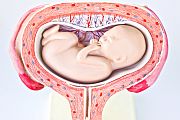With drop in number of multiple embryo transfers, twin and triplet birth rates
TUESDAY, March 3, 2015 (HealthDay News) — Nearly 2,000 more infants were born with the help of in vitro fertilization (IVF) in 2013, compared with 2012, according to a new report from the Society for Assisted Reproductive Technology.
Almost 175,000 IVF cycles led to the birth of slightly more than 63,000 babies, compared with just over 165,000 IVF cycles that led to the birth of slightly fewer than 62,000 babies in 2012. The society also said more women, regardless of age, chose to have a single embryo transferred. The rise in the number of women making this choice was greatest among women under 35. In that age group, 22.5 percent decided to have a single embryo transferred, compared with almost 15 percent in 2012.
Trends noted in previous years continued in 2013, according to the report. There were fewer embryos transferred per cycle among women of all ages, an increase in embryo implantation rates in all age categories, and an overall decline in multiple births. The number of twins resulting from IVF fell from 12,436 in 2012 to 12,085 in 2013, and the number of triplets resulting from IVF dropped from 411 to 376.
“We are extremely encouraged to see the number of embryos transferred per cycle continue to go down and that more and more patients are choosing single embryo transfer,” James Toner, M.D., Ph.D., president of the Society for Assisted Reproductive Technology, said in a group news release. “The goal of reducing the incidence of multiple pregnancies is extremely important, and patients can see from the data that fewer embryos transferred do not mean a lower chance of pregnancy.”
Copyright © 2015 HealthDay. All rights reserved.








